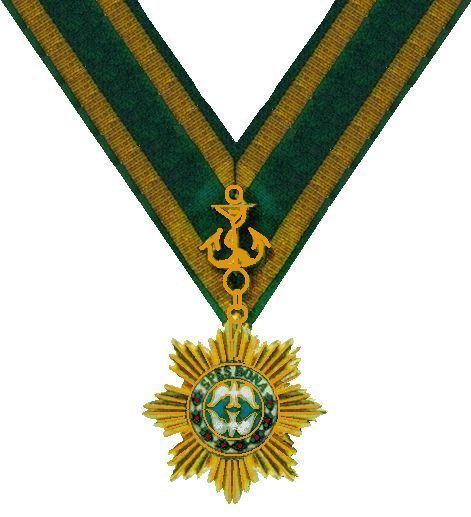 | ||
South African orders, decorations and medals are those military and civilian orders, decorations and medals issued by the Government of South Africa. The following is a (non-exhaustive) list of these:
Contents
- Union of South Africa
- Republic of South Africa
- 19671986
- 19862002
- Union of South Africa KingsQueens Medal for Bravery
- Woltemade Decoration for Bravery
- Woltemade Cross for Bravery
- Nkwe Leopard decorations for bravery
- Protea Decoration for Merit
- Civilian
- Order of the Baobab
- Order of Ikhamanga
- Order of Luthuli
- Order of Mapungubwe
- Order of the Companions of O R Tambo
- The Order of Mendi for Bravery
- References
Union of South Africa
The Union of South Africa was formed in 1910, as a self-governing dominion in the British Empire. A medal was issued to commemorate the event.
As a dominion, the Union came under the British honours system, and South Africans featured in the semi-annual British honours lists. South Africans also received British civilian decorations for bravery. The nationalist government stopped the conferment of titles and orders in 1925, and discontinued nominations for bravery awards after the Union's independence was recognised in 1931. It established its own bravery award a few years later.
The Union's civil honours thus consisted of:
When South Africa established its own independent honours system in 1952, the Queen's Medal for Bravery was transferred to it. The medal issued to mark Queen Elizabeth II's coronation in 1953 was also ranked as a South African award, because Her Majesty was Queen of South Africa as well as of the United Kingdom and her other realms and territories.
Republic of South Africa
South Africa became a republic and left the Commonwealth in 1961.
1967–1986
During the 1960s and 1970s, the government developed a small range of civil honours to recognise bravery and meritorious service:
1986–2002
The civil honours system was enlarged during the 1980s. In 1986, the five orders were collectively dubbed the "national orders", and a Chancery of Orders was established in the Office of the State President to administer them.These were retained after South Africa's return to the Commonwealth of Nations in 1994. The expanded honours system comprised:
Union of South Africa King's/Queen's Medal for Bravery
The Union of South Africa King's Medal for Bravery was instituted in 1939 to award South African citizens for exceptional gallantry in saving life.
The decoration had two grades (Gold and Silver) and had a blue ribbon with orange edges. The medal lapsed on 31 May 1961, when South Africa became a republic.
Woltemade Decoration for Bravery
The Woltemade Decoration for Bravery was a revived, republican version of the King's/Queen's Medal for Bravery. It was instituted in 1970 and was awarded until 1988, when it was replaced by the Woltemade Cross for Bravery.
Woltemade Cross for Bravery
The Woltemade Cross for Bravery (post-nominal letters: WD) was instituted in 1988, replacing the Woltemade Decoration, to award South African citizens for outstanding bravery in saving life. The cross had two grades (Gold and Silver) and had a blue ribbon with orange edges. The Woltemade Cross was discontinued in 2002.
Nkwe (Leopard) decorations for bravery
The three Nkwe (Leopard) Decorations for Bravery are awarded for bravery in military operations in place of the Honoris Crux Decorations in 2003.
The three Leopard Decorations are:
Protea Decoration for Merit
The three Protea Decorations for Merit are for leadership, meritorious conduct or devotion to duty in place of the previous Southern Cross Decoration, Southern Cross Medal and Military Merit Medal.
The three Protea Decorations are:
Civilian
The "old South African" honours were retained for a few years after the Republic was reconstituted as a multi-racial democratic state in 1994. The sports awards were, however, replaced immediately. A new series of national orders was introduced in 2002, as part of the process of creating new national symbols. The current civil honours are:
Order of the Baobab
The Order of the Baobab (SCOB/GCOB/COB) was instituted in 2002 to award South African citizens for services to democracy, human rights, arts and sciences and community service.
The order has three grades: Gold, Silver and Bronze.
Order of Ikhamanga
The Order of Ikhamanga (OIG/OIS/OIB) was instituted in 2003 to award South African citizens who have excelled in the fields of arts, culture, literature, music, journalism and sport.
The order has three grades: Gold, Silver and Bronze.
Order of Luthuli
The Order of Luthuli was instituted in 2003 to award South African citizens who have made a meaningful contribution to the struggle for democracy, human rights, nation-building, justice, peace and conflict resolution.
The order has three grades: Gold, Silver and Bronze.
Order of Mapungubwe
The Order of Mapungubwe (OMP/OMG/OMS/OMB) was instituted in 2002 to award South African citizens for excellence and exceptional achievement. The order has four grades: Platinum, Gold, Silver and Bronze.
Order of the Companions of O. R. Tambo
The Order of the Companions of O. R. Tambo (SCOT/GCOT/COT) was instituted in 2002 to award heads of state and senior diplomats of other countries for showing friendship towards South Africa.
The order has three grades: Gold, Silver and Bronze.
The Order of Mendi for Bravery
The Order of Mendi for Bravery (OMBG/OMBS/OMBB) (originally the Mendi Decoration for Bravery) is awarded to South African citizens who have performed an extraordinary act of bravery that placed their lives in great danger, or who lost their own lives, including in trying to save the life of another person, or by saving property, in or outside the Republic of South Africa.
The order has three grades (post-nominal letters in brackets): Gold (OMBG), Silver (OMBS) and Bronze (OMBB). The ribbon is gold coloured and has cream-coloured lion footprints upon it.
